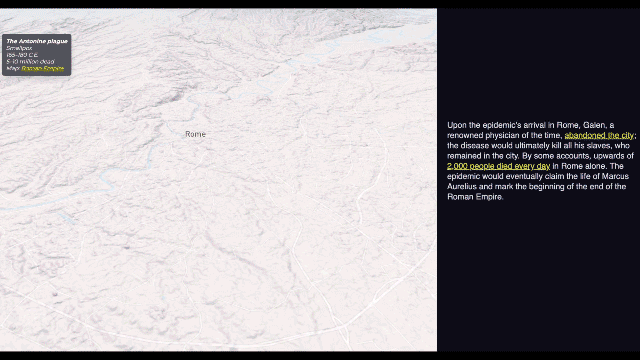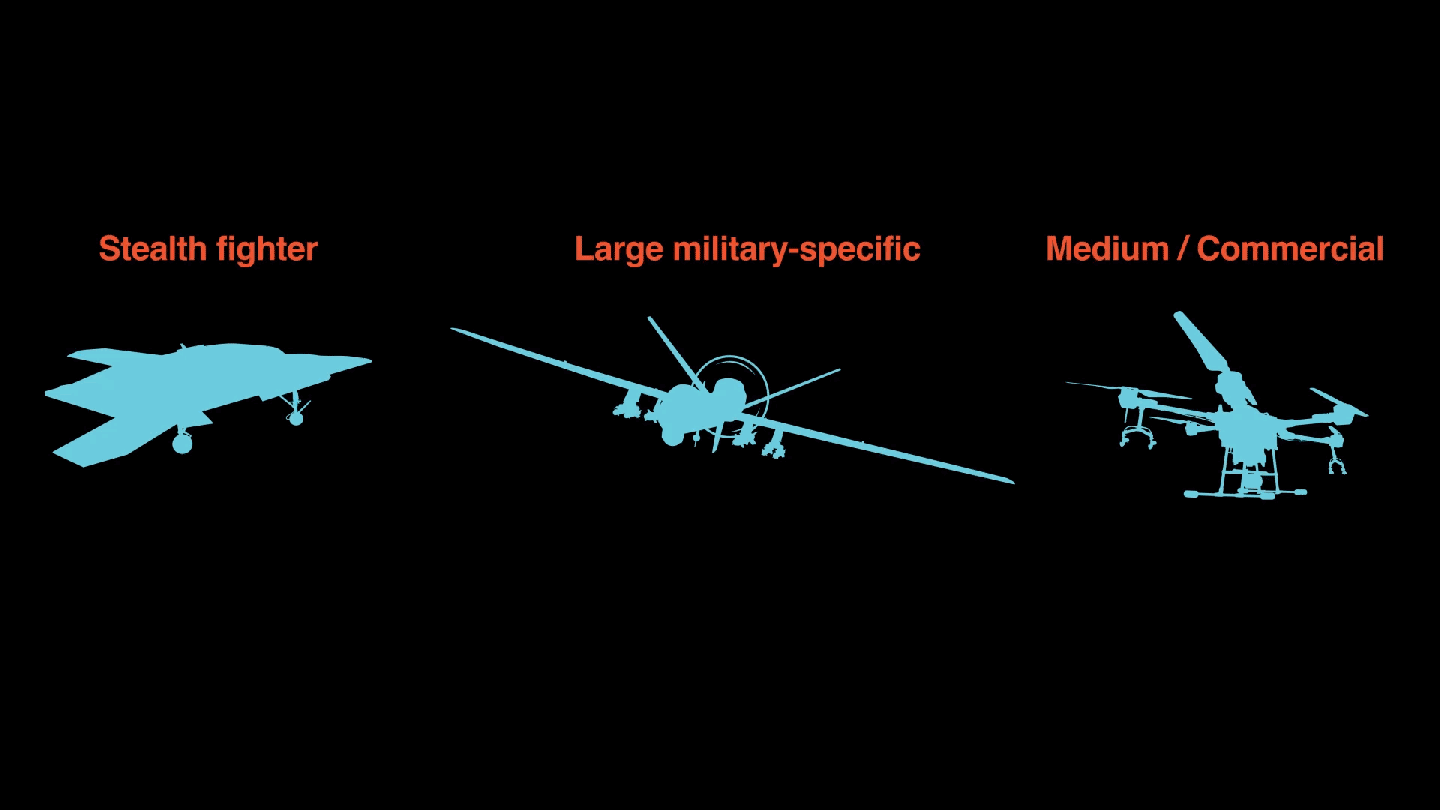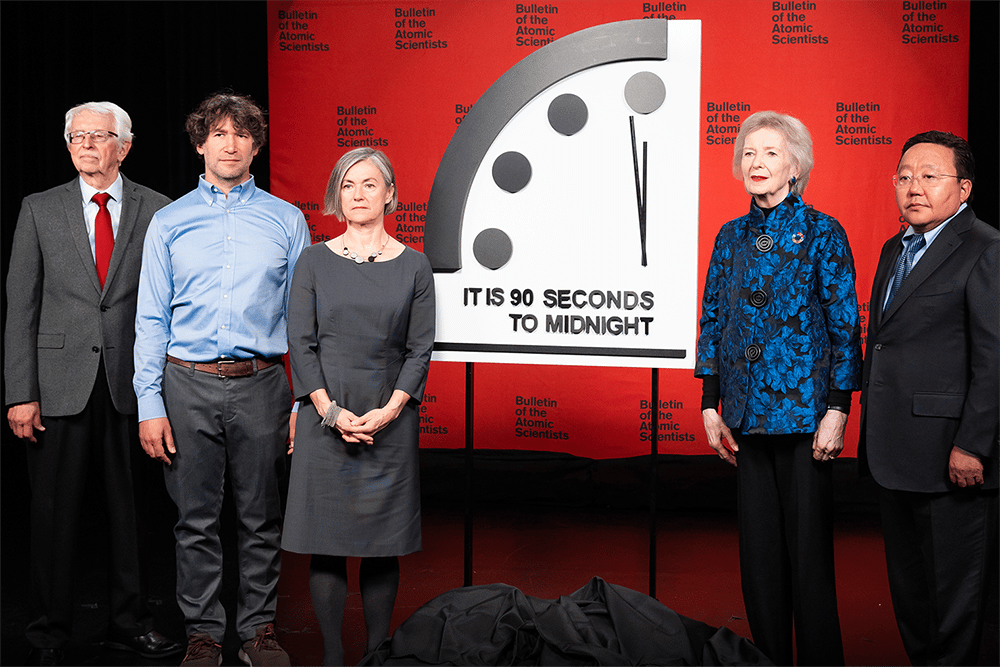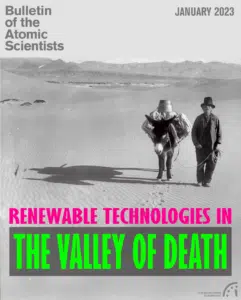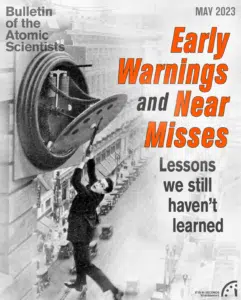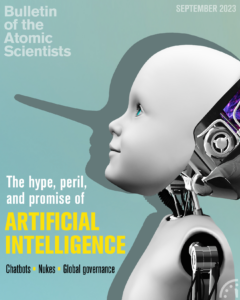The best multimedia stories of 2023
By Thomas Gaulkin, Erik English | December 25, 2023
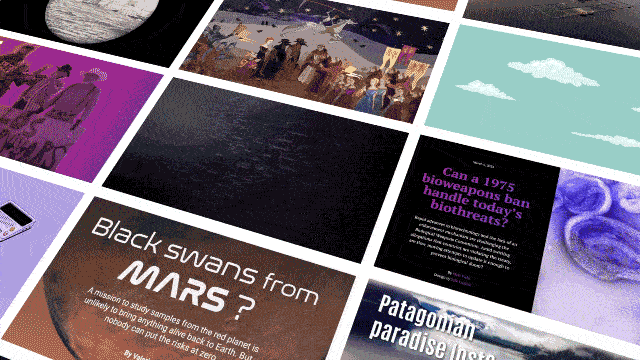 Animation by Erik English.
Animation by Erik English.
This year was interesting for multimedia journalists, in no small part because of the emergence of AI-generated art. But the Bulletin has opted to maintain a distinctly human approach to multimedia production. And in 2023, there was no shortage of compelling, human stories from events around the world—many harrowing, some humorous—that lent themselves to multimedia presentations. From the COVID-19 pandemic to the wars in Ukraine and Gaza, from the climate crisis to new nuclear threats, artful stories like those below are part of the Bulletin’s commitment to essential journalism—and will continue to be as we explore new ways of showing and telling stories about the dangers that threaten humanity.
An illustrated history of the world’s deadliest epidemics, from ancient Rome to Covid-19
By Erik English, associate multimedia editor
In January, as President Biden announced that the formal emergency for the Covid pandemic would end after at least six million deaths worldwide, we published a look back at history’s most lethal epidemics. With it, we began presenting a storytelling approach with dynamic maps that was famously pioneered by the New York Times. Erik’s illustrated history of the world’s deadliest epidemics makes scrolling through key events of the two millennia easy and captivating.
Other stories that featured this immersive mapping style included looks at the first year of the war in Ukraine, the usefulness of a 40-year-old treaty for addressing 21st-century biological threats, and how indigenous groups in Hawaii and Oceania are confronting harms from the United States’ long presence in the region.
Black swans from Mars?
Writing by Valerie Brown; design by Thomas Gaulkin, multimedia editor; video by Erik English
Valerie Brown’s deep dive into NASA’s mission to bring back samples from Mars stood out from the variety of magazine-style features we published this year. Brown’s report weaves details of NASA’s potentially planet threatening plan to deliver Martian soil to Earth with a history of the space agency’s past Mars missions (and failures), illustrated throughout with archival images and renderings of imagined future space travel.
Among the many other quality features was climate editor Jessica McKenzie’s first-hand account of controversial salmon farms in southern Chile, which offered a feast of photographs of the Patagonian coast (and of ecological damage to challenge even the strongest stomachs); Makato Takahashi’s curation of artworks about the aftermath of the Fukushima nuclear disaster, translated vividly to the screen; and we took a superhero comic book approach to a report by Jay Tilden and Dallas Boyd detailing the history of NEST, the Nuclear Emergency Support Team that is trained to run straight at nuclear danger.

It’s impossible to talk about the Bulletin and multimedia in 2023 without mentioning Christopher Nolan’s surprisingly successful movie Oppenheimer. The record-setting IMAX blockbuster and cinematic sensation quickly becaome one of the most popular films about nuclear weapons ever made, alongside classics like Dr. Strangelove and The Day After. The Bulletin devoted an entire issue of its premium magazine to the film and the man (who was the founding chair of the Bulletin’s board), hosted screenings and discussions across the country, and produced our own video looking at some of the things that Nolan’s film left out, like the ongoing traumas experienced by the “downwinders” affected by the Trinity nuclear test.
Terrorists are using consumer drones—and it’s getting harder to stop them
Video by Erik English
The Bulletin’s most recent video tackles the traumatic histories being made right now in Ukraine and Gaza, as a cheap and widely available technology becomes one of the most disruptive and dangerous: Consumer drones have become a key weapon in conflicts around the world, as seen during the October 7 attack by Hamas in Israel. This explainer provides important context for understanding how difficult it is becoming to control a technology that can be operated from anywhere in the world.
In 2023 we also produced videos on the rise of maximum containment laboratories to study highly dangerous pathogens, on the harmful influence of anti-vaxxers, and on the debunking of a medieval theory of biological siege warfare. And, to prove that the Bulletin’s concerns aren’t all doom and gloom, English took an unusually serious look at the geopolitical significance of a pretty sparkly event: the Eurovision song contest.
Speaking of doom: The setting of the Doomsday Clock at 90 seconds to midnight was viewed on January 24 by tens of millions of people. Seen on living room TVs, radio shows and podcasts, in print, and across every platform you can think of online, the Doomsday Clock could be considered one of the most iconic multimedia symbols of the last century—thanks to the design that artist Martyl Langsdorf first revealed on the June 1947 cover of the Bulletin, when nuclear danger was our central concern. Today’s covers can’t compete with the Clock’s longstanding popularity, but they do offer a view, at a glance, on the widening global dangers covered by the Bulletin in 2023.
Together, we make the world safer.
The Bulletin elevates expert voices above the noise. But as an independent nonprofit organization, our operations depend on the support of readers like you. Help us continue to deliver quality journalism that holds leaders accountable. Your support of our work at any level is important. In return, we promise our coverage will be understandable, influential, vigilant, solution-oriented, and fair-minded. Together we can make a difference.
